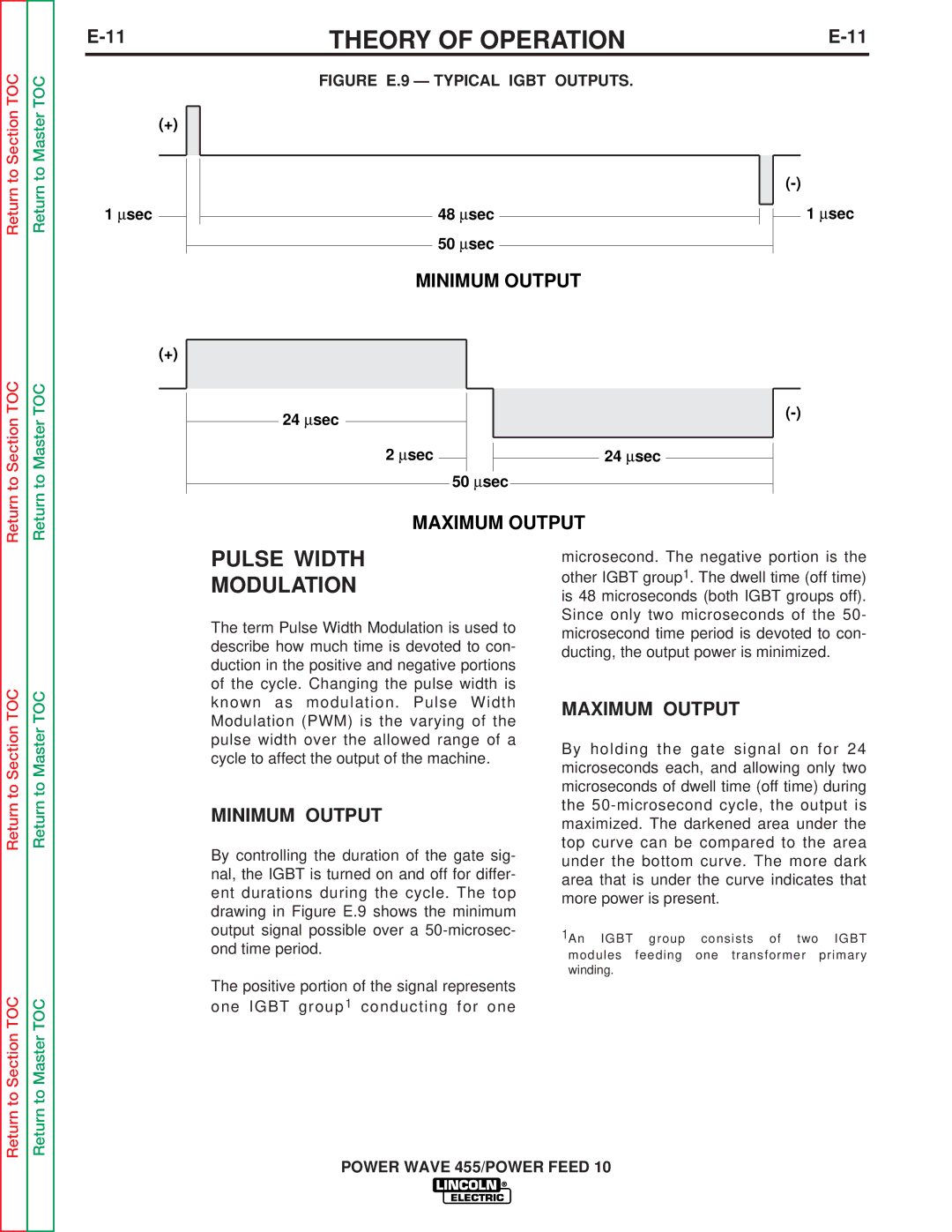
Return to Section TOC
Return to Section TOC
Return to Master TOC
Return to Master TOC
|
|
| THEORY OF OPERATION |
|
| ||||
|
|
|
| FIGURE E.9 — TYPICAL IGBT OUTPUTS. |
|
|
| ||
| (+) |
|
|
|
|
|
|
| |
|
|
|
|
|
|
|
| ||
|
|
|
|
|
|
|
|
|
|
|
|
|
|
|
|
|
| ||
|
|
|
|
|
|
|
|
| 1 ∝sec |
1 ∝sec |
|
|
|
| 48 ∝sec |
|
|
| |
|
|
|
|
| |||||
|
|
|
|
|
|
| |||
|
|
|
|
| 50 ∝sec |
|
|
|
|
|
|
|
|
|
|
|
|
| |
|
|
|
|
|
|
|
|
|
|
MINIMUM OUTPUT
(+)
|
|
|
|
|
|
|
|
|
|
| |
|
|
|
|
|
|
|
|
|
|
| |
| 24 ∝sec |
|
|
|
|
|
|
|
|
| |
| 2 ∝sec |
|
|
|
|
|
|
|
|
| |
|
|
|
|
|
|
|
|
|
|
| |
|
|
|
|
|
|
|
|
|
|
| |
|
|
|
|
|
|
|
| 24 ∝sec |
|
| |
|
|
|
|
|
|
| |||||
|
|
|
|
|
|
|
|
|
|
| |
|
|
|
| 50 | ∝sec |
|
| ||||
|
|
|
|
|
| ||||||
|
|
|
|
|
|
|
|
|
|
|
|
MAXIMUM OUTPUT
Return to Master TOC
PULSE WIDTH
MODULATION
The term Pulse Width Modulation is used to describe how much time is devoted to con- duction in the positive and negative portions of the cycle. Changing the pulse width is known as modulation. Pulse Width Modulation (PWM) is the varying of the pulse width over the allowed range of a cycle to affect the output of the machine.
MINIMUM OUTPUT
By controlling the duration of the gate sig- nal, the IGBT is turned on and off for differ- ent durations during the cycle. The top drawing in Figure E.9 shows the minimum output signal possible over a
microsecond. The negative portion is the other IGBT group1. The dwell time (off time) is 48 microseconds (both IGBT groups off). Since only two microseconds of the 50- microsecond time period is devoted to con- ducting, the output power is minimized.
MAXIMUM OUTPUT
By holding the gate signal on for 24 microseconds each, and allowing only two microseconds of dwell time (off time) during the
1An IGBT group consists of two IGBT modules feeding one transformer primary winding.
Return to Master TOC
The positive portion of the signal represents one IGBT group1 conducting for one
POWER WAVE 455/POWER FEED 10
